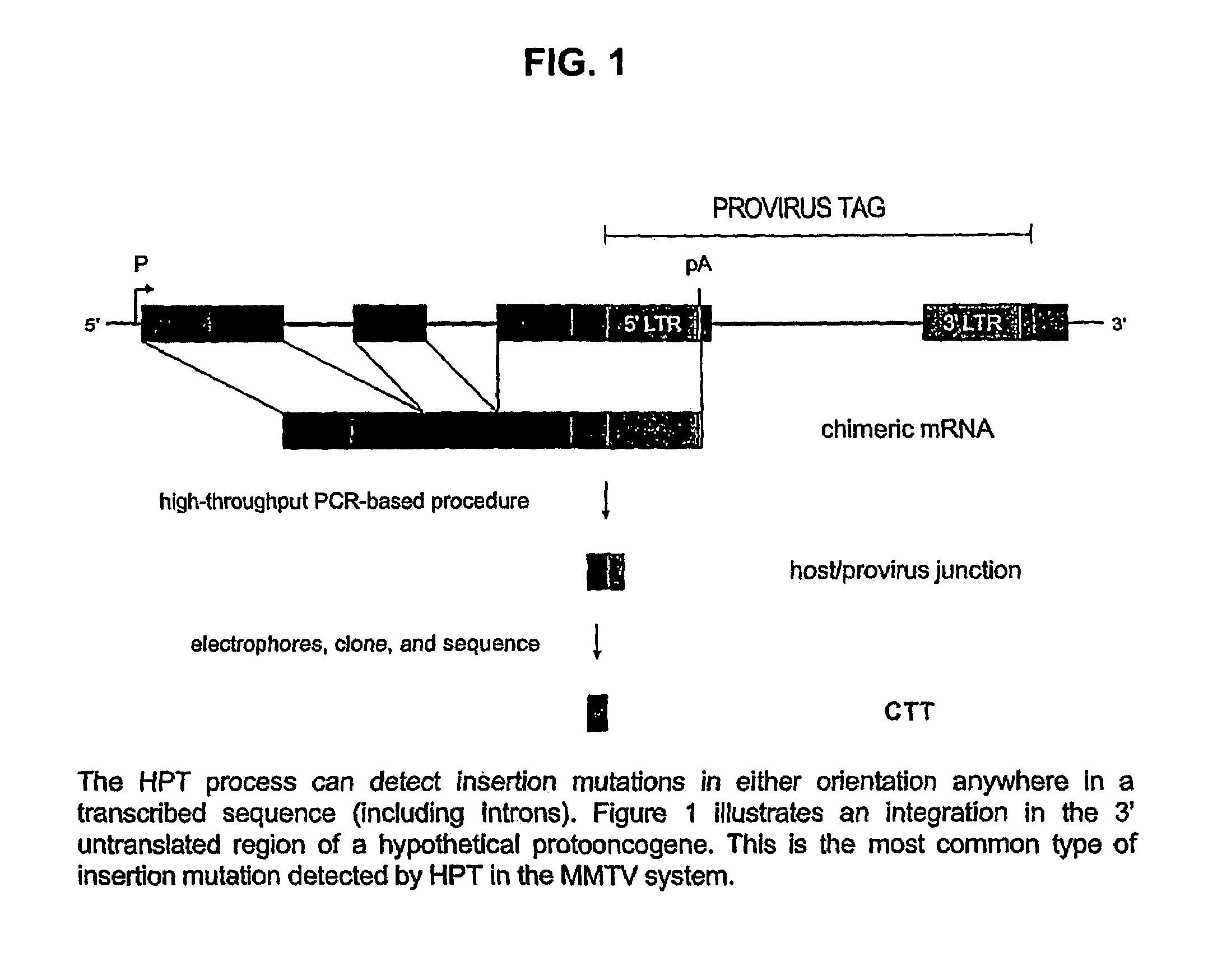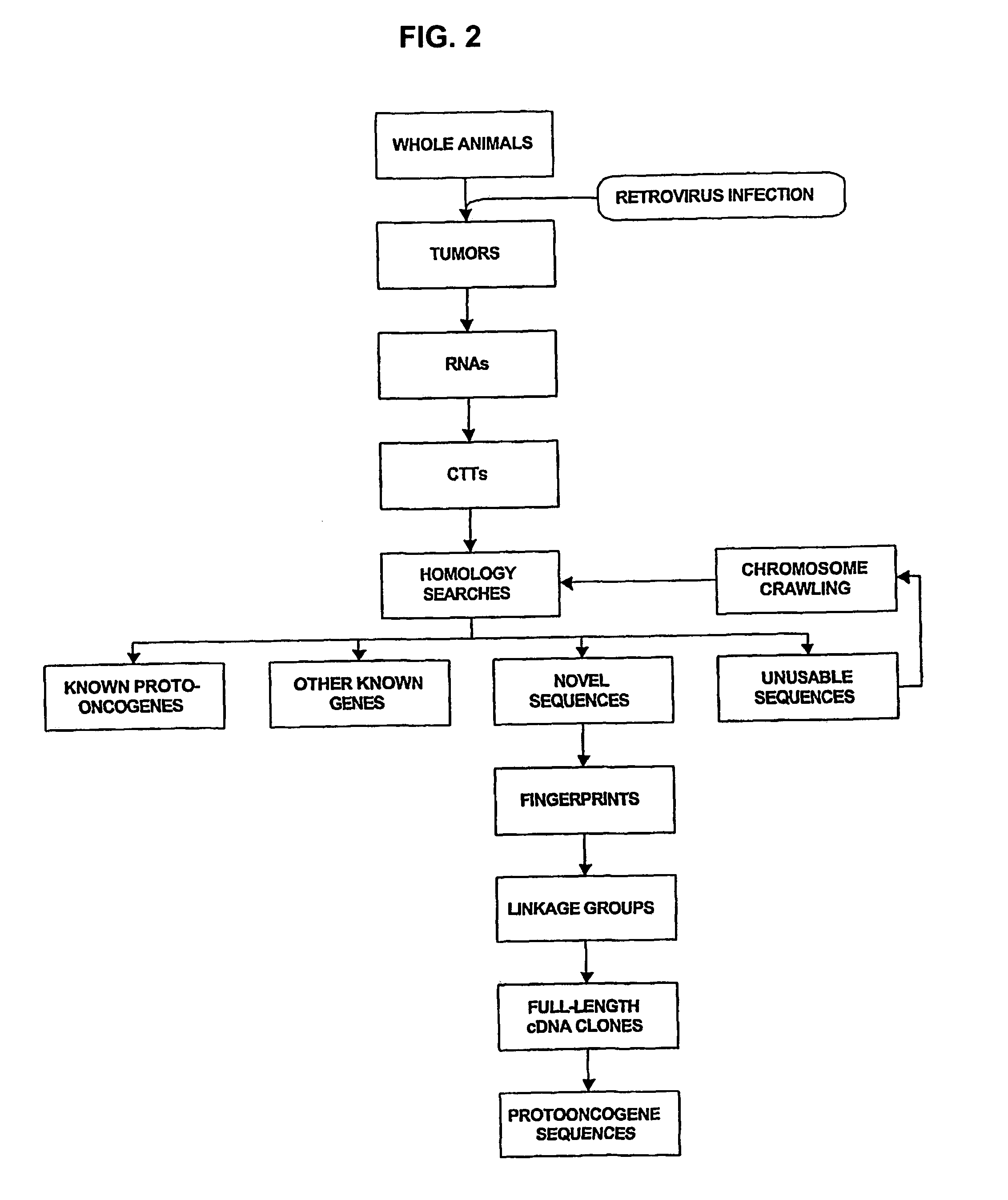High through-put cloning of protooncogenes
a protooncogene, high throughput technology, applied in the field of high throughput cloning of protooncogenes, can solve the problem of considerable risk of dna-based methods
- Summary
- Abstract
- Description
- Claims
- Application Information
AI Technical Summary
Benefits of technology
Problems solved by technology
Method used
Image
Examples
Embodiment Construction
A. General Purpose or Utility
[0026]HPT is new technology for isolating partial cDNAs representing functionally validated protooncogenes. It is a scaleable batch process that is amenable to high-throughput applications. Saturation mutagenesis of all accessible protooncogenes in the mammalian genome is feasible using HPT.
B. Brief Description of the State of the Art Prior to your Invention
[0027]The state-of-the-art prior to this invention was PCR-based isolation of provirus integration sites from tumor DNA. This method, as currently practiced, involves an inverse-PCR (I-PCR strategy). Identification of the activated protooncogene at a particular integration locus relies on prior characterization of the gene by other methods. For novel genes, positional cloning is required. The DNA-based method involves considerable risk, since it is not know until the end of the positional cloning process whether the locus under investigation is novel.
C: Technical Description
[0028]1. Isolate total RNA ...
PUM
| Property | Measurement | Unit |
|---|---|---|
| nucleic acid sequence | aaaaa | aaaaa |
| length | aaaaa | aaaaa |
| full-length | aaaaa | aaaaa |
Abstract
Description
Claims
Application Information
 Login to View More
Login to View More - R&D
- Intellectual Property
- Life Sciences
- Materials
- Tech Scout
- Unparalleled Data Quality
- Higher Quality Content
- 60% Fewer Hallucinations
Browse by: Latest US Patents, China's latest patents, Technical Efficacy Thesaurus, Application Domain, Technology Topic, Popular Technical Reports.
© 2025 PatSnap. All rights reserved.Legal|Privacy policy|Modern Slavery Act Transparency Statement|Sitemap|About US| Contact US: help@patsnap.com



